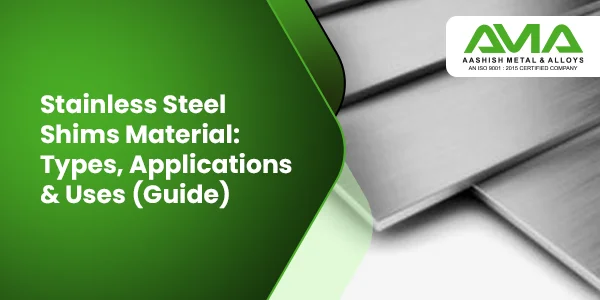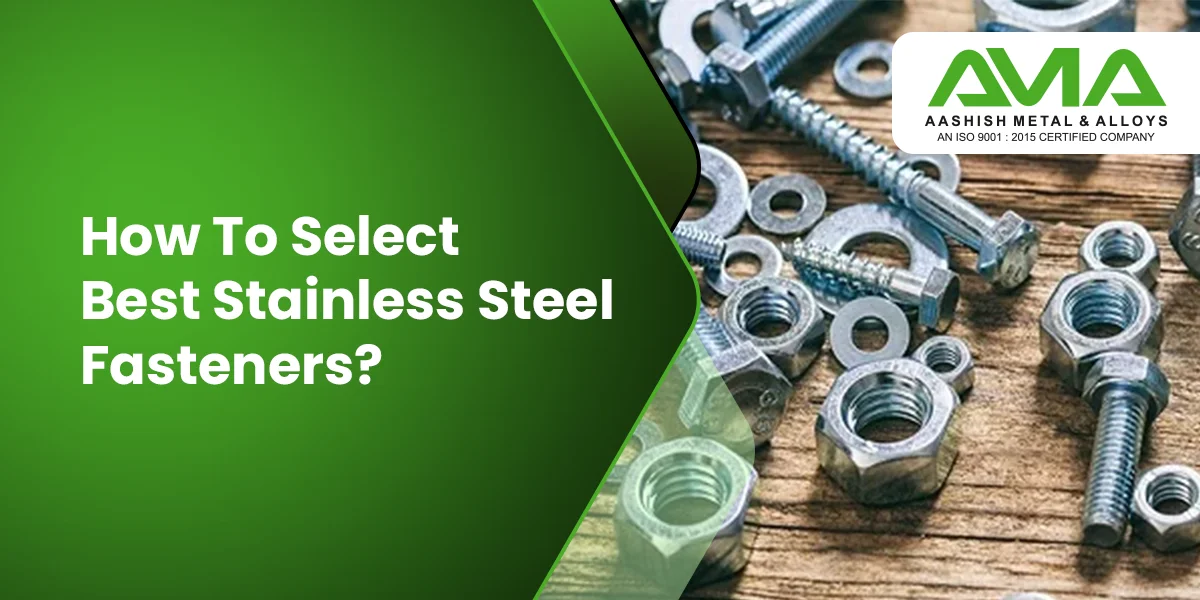Shims may be small, but they are essential components in engineering and maintenance. These thin spacers play a critical role in accuracy, safety, and efficiency of all kinds of equipment. By filling gaps and aligning parts, shims ensure machinery runs smoothly and structures remain stable. From automotive engines to aerospace assemblies, and from heavy industrial machines to home projects, shims are indispensable across many industries. In this guide, we’ll explore what shims are, their history, types, how they’re made, where they’re used, and why choosing the right shim (and the right supplier) is so important for any precision work.
What Are Shims?
Shims are thin, flat inserts used to fill small gaps and set precise spacing so parts align, level, and fit correctly. Think of sliding a sheet under a wobbly table leg, the same idea applies in machinery, but to microns. Placed between two surfaces, shims adjust clearance, take up slack, and distribute load to prevent misalignment, vibration, and uneven stress. Types of shims span many materials; a common choice is shim material stainless steel, i.e., stainless shims / stainless steel shims (often an SS shim) along with brass, copper, plastics, and composites. By enabling fine adjustments, shims improve performance, reliability, and safety in precision assemblies.
History and Evolution of Shims
Shimming began in antiquity with wedge-like inserts: Ancient Egypt (~3000 BCE) used bronze wedges to split stone, and early builders used stone, wood, and antler pieces to level or stabilize work. The term “shim” entered English around 1715–1725, but the practice predates it; during the Industrial Revolution, machinists often improvised with paper, leather, tin, or coins to achieve fit. In the early 1900s, industry shifted to standardized pre-cut and adjustable metal shims; one account credits W. L. Shim in 1917 with an adjustable design. Today, standardized types of shims, flat, slotted (horseshoe), laminated, wave, and custom are produced in defined thickness steps under DIN/ASTM/ISO expectations, and even trade classification (e.g., ss shim hsn code) reflects this maturity. Manufacturing has progressed from hand cuts to stamping, laser, waterjet, and EDM, delivering tight, repeatable tolerances. In critical service, stainless shims, that is, an SS shim made from shim material stainless steel are preferred for durability and corrosion control, while brass, copper, plastics, and composites serve specialized needs. The arc runs from crude wedges to precision components built for accuracy, reliability, and safety.
Types of Shims
Shims are incredibly versatile and come in many types, classified either by their design/shape or by the material they’re made from. Choosing the right type is important because each design and material offers different advantages (and some drawbacks). Below, we break down the common types:
| Design type | Description / function | Typical uses / notes |
| Flat Shims (Solid Shims) | Uniform plates or washers for general spacing, leveling, and machinery alignment; provide full, even contact | Workhorse option for precision alignment across equipment |
| Slotted Shims (Horseshoe Shims) | U/C-shaped; slide around bolts for machine-foot adjustment without disassembly | Quick, repeatable alignment on bases and frames |
| Tabbed Shims | Flat shims with integral pull tab for easy insertion/removal in tight spaces | Common in alignment packs that may be fine-tuned later |
| Laminated (Peelable) Shims | Bonded foil layers; peel to achieve exact thickness on site | Excellent for fine adjustment; slightly less rigid and typically costlier than solid shims |
| Wave Shims (Wave Washers) | Spring-like rings that compress to take up small clearances and damp vibration | Best for preload or noise control; not for bridging large gaps |
| Tapered Shims (Wedge Shims) | Thick-to-thin wedge to correct angular misalignment or level non-parallel surfaces | Effective for leveling frames and housings when parallelism is off |
| Custom Shims | Cut to drawing with holes, slots, or contours for exact fit | Used when standard shapes cannot deliver full contact or required accessibility |
Shim Manufacturing Process
Shims might look like simple pieces, but a lot of care goes into manufacturing them to precise specifications. The process generally includes material selection, cutting/forming, quality checks, and packaging. Here’s an overview:
1) Material selection: Choose the correct shim stock and target thickness/temper for strength, corrosion resistance, and tolerance. Typical options include shim material stainless steel (304/316), carbon steel, brass/copper, plastics, and special alloys. For stainless, certified sheet/foil is selected close to the final thickness to minimize finishing.
2) Cutting & shaping: this includes many methods, like-
- Stamping/press punching: Fast, economical for high volumes and standard shapes (e.g., slotted packs). Tool wear increases on thicker/harder stock.
- CNC laser cutting: No hard tooling; ideal for intricate profiles and short runs in stainless, titanium, or composites with tight tolerances.
- Waterjet cutting: Cold process (no heat-affected zone); accurate on very thick or heat-sensitive materials, from rubber to hardened steel.
- Wire EDM: Ultra-precise for very thin metals or complex geometries; slower but best-in-class accuracy (tooling/aerospace shims).
- Conventional machining: Milling/turning for thicker spacers or ring-type shims; flat sheet work is usually done by the methods above.
CAD/CAM drives all processes; the chosen method depends on material, thickness, and batch size. Edges are kept burr-free for safe handling and consistent fit.
3) Quality checks: Dimensional inspection verifies outline, holes/slots, and thickness tolerance using micrometers, calipers, and optical systems. Flatness and surface finish are confirmed; typical specs might be 1.00 mm ± 0.02 mm. Nonconforming parts (warp, scratches, out-of-tolerance) are rejected; assorted kits may be individually gauged and sorted.
4) Surface treatment & finishing: Carbon steel shims may be galvanized/plated to resist corrosion; stainless steel shims typically require deburring/tumbling only. Where tighter control is needed, parts can be ground or lapped to final thickness. All edges are finished to eliminate sharp burrs for safer installation.
5) Packaging & identification: Thin shims are protected to prevent bend/dent damage: flat separators, anti-rust papers/oils (for ferrous grades), and rigid cartons. Clear labels show thickness, grade, lot/traceability and for trade paperwork, the ss shim hsn code when applicable. This ensures shims arrive clean, flat, and ready to install.
Applications of Shims
Where are shims used? Virtually every industry that involves assembly or machinery makes use of shims. Whenever there is a need to align components, take up slack, or distribute a load evenly, a shim might be the solution. Here are some of the major sectors and scenarios where shims are indispensable:
- Heavy Machinery Alignment: Shims level and align motors, pumps, compressors, and gearboxes by sitting under machine feet. Using stainless steel shims (often supplied as SS shim packs) reduces vibration and bearing wear. Technicians combine types of shims to hit exact height while maintaining full contact.
- Structural Engineering & Construction: Contractors shim columns and beams to set elevation and plumb, and use horseshoe (slotted) or tapered shims to square doors/windows. Plastic/composite shims keep masonry and precast gaps uniform, while stainless shims support high loads at base plates.
- Automotive Industry: Shims set valve clearances, adjust gearbox/differential end-play, and fine-tune suspension camber/toe. Brake pad shims, often an SS shim, dampen squeal and vibration. Material depends on duty: stainless steel shims for durability; brass/copper or engineered plastics for specialty needs.
- Aerospace Industry: Airframes use thin, custom shims for flush fits; engines use precisely gauged pieces for bearings, seals, and casings. Specified shim material stainless steel, titanium, laminated peelables, or composites maintain micron-level tolerances. MRO kits provide graded thickness steps for rapid restoration.
- Electrical & Electronics: Large motors/generators use alignment shims to control runout; PCBs and connectors use tiny spacers to set standoff and clearance. Non-conductive plastics/ceramics isolate; brass/copper aid grounding or heat spread. Ultra-thin foils enable precision sensor or optics calibration.
- Oil, Gas & Petrochemical Plants: Pumps, compressors, and turbines are shimmed to align with drivers, minimizing vibration and seal failures. Pipe supports/flanges and vessel bases use shims to prevent stress and ensure plumb installation. Corrosive environments favor stainless steel shims as the default choice.
Benefits of Using Stainless Steel Shims
Why do engineers and maintenance professionals often reach for stainless steel (SS) shims in particular? It’s because stainless steel shims provide a combination of qualities that deliver significant benefits in critical applications. Here are some of the key advantages of using stainless steel shims:
- Precision alignment & stability: Stainless steel shims are made to tight thickness tolerances (often to microns), allowing exact clearances and true alignment that cuts vibration and wear. An SS shim at 1.00 mm reliably delivers that dimension for consistent setup.
- High strength & load-bearing: Despite minimal thickness, stainless shims resist crushing and deformation under heavy loads. They keep machine feet level, maintain bearing preload, and extend equipment life by distributing forces correctly.
- Corrosion resistance & durability: As shim material stainless steel, SS (304/316) stands up to humidity, oils, and many chemicals. It avoids rust-thinning seen in plain steel, enabling long service life in outdoor, marine, and petrochemical environments.
- Reduced vibration & noise: Correctly sized stainless steel shims eliminate gaps, prevent rattling, and stabilize assemblies. Lower vibration means quieter operation and less fastener loosening or component fatigue.
- Maintenance cost savings: Longer-lasting alignment reduces unplanned downtime, parts wear, and energy waste. A low-cost SS shim can prevent expensive failures by preserving shaft alignment and seal/bearing life.
- Safety improvements: Proper shimming minimizes overheating, imbalance, and loosening, reducing the chance of catastrophic failures. The strength and integrity of stainless shims support safer, more reliable operation across critical assets.
Shim Materials and Their Properties
Different shim materials bring different properties to the table, and knowing these helps in selecting the right shim for a given job. Let’s summarize the common shim materials and their key properties:
| Material | Key Properties | Typical Uses | Pros | Cons |
| Stainless Steel (304/316) | High strength-to-thickness; excellent corrosion resistance (Cr-rich); stable under heat/stress | Industrial machinery, outdoor equipment, marine & petrochemical service | Long service life; maintains precision; many sizes/thicknesses available | Higher cost than plain steel; tougher to cut/modify on site |
| Brass & Copper | Soft, malleable; non-sparking; good electrical/thermal conductivity; non-magnetic | Delicate mechanisms, instruments, electronics, fuel/gas environments | Easy to trim and form; won’t rust; gentle on mating surfaces | Lower strength; can creep under load; may tarnish; lower temp limits vs steel |
| Plastics (HDPE, PTFE, PC, etc.) | Lightweight; chemically resistant (grade dependent); electrical/thermal insulators | Electrical isolation, chemical tanks, construction (windows/doors, precast) | Low cost; no corrosion; color-coded thickness; easy to stack/trim | Temperature and compressive-load limits; potential UV degradation |
| Alloy & Spring Steels (spring steel, tool steel, Inconel/Monel) | Very high strength; spring temper options; some retain strength at extreme temperatures | High-load, high-temp, cyclic or aerospace applications | Withstand heat, impact, and vibration; spring shims maintain preload | Expensive; harder to fabricate (EDM/laser often required); some grades still corrode |
| Titanium | Excellent corrosion resistance; high strength-to-weight; non-magnetic | Aerospace, racing/marine, medical devices | Light yet strong; performs in salt/humidity | Very costly; specialized cutting; niche availability |
| Composites (fiberglass/carbon laminates, hybrids) | Tailorable properties; low thermal expansion; good strength-to-weight | Aerospace, precision assemblies; peelable laminated shims | Non-corroding; can integrate damping/insulation | Costly; compressive performance varies; risk of delamination if poorly made |
Industry Standards & Codes for Shims
Shims might be small components, but they are often subject to certain industry standards and codes to ensure quality and consistency, especially in industrial use. Here we discuss standards, typical thickness ranges, and a note on HSN/GST classification:
| Topic | Key Points |
| International standards (ASTM, ISO, DIN) | Define material grades and dimensional tolerances to ensure interchangeability and quality across suppliers. Specify grade and standard on the PO to guarantee consistent thickness, flatness, and burr-free edges. |
| Typical thickness ranges | Foils down to ~0.01 mm for fine adjustment; common pre-cut alignment shims ~0.1–3.0 mm in stepped increments; beyond ~5 mm typically treated as spacer/plate. Stock ranges vary by material. |
| Tolerances and flatness | Precision thin shims often ±0.005–0.01 mm; several-mm parts ~±0.05 mm. Flatness is controlled to avoid rocking. Verify tolerance class and measure when stacking types of shims for critical fits. |
| HSN/GST classification (India) | Classified by material/part category for taxation and customs. Confirm the correct ss shim hsn code with the supplier/broker and keep descriptions consistent for stainless steel shims / SS shim kits. |
| Purchasing notes | Specify material grade, standard, thickness/tolerance, size/shape, edge finish/deburr, and lot/COC. For exports/imports, include correct HSN, packing details, and material test reports to streamline QA and traceability. |
Common Mistakes to Avoid When Selecting Shims
Selecting and installing shims might seem straightforward, but several pitfalls can compromise the effectiveness of a shim. Here are some common mistakes to watch out for and avoid:
- Using the wrong material for the environment: Match the shim to heat, moisture, and chemicals. In wet or corrosive areas, choose shim material stainless steel (304/316) or suitable plastics like plain carbon steel will rust. Near heat sources, avoid low-temp plastics; in electrically sensitive zones, use non-magnetic materials. Correct material choice makes stainless shims / stainless steel shims the default for critical duty.
- Ignoring thickness tolerance and flatness: Measure the gap (feeler gauges/micrometers) and select the exact thickness with a specified tolerance class; verify flatness and deburred edges. Using the right types of shims at the right tolerance prevents misalignment, vibration, and uneven load.
- Overusing makeshift shims: Cardboard, coins, or stacked washers compress, shift, and loosen which is fine in an emergency, unsafe long term. Replace temporary fixes with purpose-made SS shim packs or engineered plastics that hold thickness and stay put.
- Forgetting long-term wear, creep, and thermal cycles: Soft metals (e.g., aluminum/brass) can groove under vibration; polymers can creep under sustained load. For durability, select hardened steel or stainless steel shims, and plan inspections/re-torque after run-in, especially where temperatures cycle.
- 5) Stacking too many pieces: A tall stack can slip and share load unevenly. Limit stacks (commonly ≤4–5 pieces), use laminated (peelable) shims for fine tuning, or specify a single thicker/custom shim to achieve the target dimension with better stability.
Importance of Customization of Shims
- Use pre-cut packs for routine alignment, but specify custom geometry when gaps or footprints are unique, custom types of shims provide full contact and repeatable positioning in critical interfaces.
- Tailor material, thickness, and size precisely. Select non-magnetic or high-temperature alloys, food-grade plastics, or shim material stainless steel (304/316); a single 0.87 mm piece eliminates stacking variability.
- Profile-matched custom shims including stainless shims, distribute load uniformly, reduce fretting and rework, avoid on-site trimming, and improve long-term stability versus multi-piece stacks.
- Choose custom-capable suppliers with engineering support and in-house CNC laser/waterjet/EDM for rapid, dimension-correct delivery of stainless steel shims and specialty designs.
How to Choose the Right Supplier for Shims
Choosing a reliable shim supplier or manufacturer is as important as choosing the right shim. A good supplier will ensure you get quality shims that meet your needs, delivered on time. Here are some factors and tips on what to look for:
- Certifications and quality control: Prioritize ISO 9001 (AS9100 where relevant) and documented QC—thickness/flatness checks, burr-free edges, and traceable lots. This matters across all types of shims, especially safety-critical SS shim applications.
- Material breadth and true customization: A single source should offer stainless, carbon steel, brass/copper, plastics, and high-temp alloys, plus real custom fabrication. Expect informed advice on picking shim material stainless steel versus alternatives and on defining tolerances that match your assembly.
- Capacity, logistics, and compliance: Confirm scalable production, stock on common sizes, and proven export experience. For cross-border shipments, accurate paperwork including the correct ss shim hsn code reduces delays and audit risk for stainless steel shims and kits.
- Support and documentation: Seek responsive technical help from inquiry to after-sales, with MTRs/COCs and inspection reports on request. Clear communication and easy RMA policies save time when timelines are tight.
- Pricing and lead time realism: Competitive but credible quotes and honest schedules for both stock and custom SS shim builds are preferable to “too-good-to-be-true” offers.
- Reputation and domain experience: A track record in your sector (automotive, aerospace, construction, energy) signals understanding of regulatory and performance needs, which is key to consistent outcomes.
Why Choose Aashish Metals for Shims?
When it comes to sourcing reliable, high-quality shims, Aashish Metal & Alloys stands out as a supplier of choice. Here’s why partnering with Aashish Metals for your shim needs is beneficial:
- Expertise in multiple materials: Aashish Metal & Alloys supplies stainless steel shims / stainless shims (304/316), brass, copper, plastics, and special alloys, advising on the optimal shim material stainless steel or alternative for each environment and load case.
- Advanced manufacturing: CNC laser, stamping, waterjet, and EDM deliver tight profiles and clean edges on standard and custom geometries across all types of shims. Process control ensures repeatable dimensions and surface quality.
- Custom and bulk supply: From one-off prototypes to large OEM releases, we produce exact-thickness, exact-profile SS shim parts and maintain stock on common ranges for quick dispatch, scaling with your demand.
- Global export and compliance: ISO-aligned systems, robust packaging, and accurate documents (including the applicable ss shim hsn code) support smooth international logistics and audits.
- Quality assurance and technical support: Material traceability, in-process inspections, and final checks underpin reliability. Our team provides prompt technical guidance, helping you lock in fit, function, and lifecycle value.
Future Trends in Shim Technology
Shims may be a long-established solution, but innovation hasn’t passed them by. The future is bringing new materials, techniques, and smarter integration for these simple yet vital components. Here are some future trends in shim technology to watch for:
- Advanced composites: Carbon-fiber, engineered polymers, and hybrid laminates for high strength-to-weight, low thermal expansion, added damping, and improved temperature capability.
- On-demand precision cutting: CAD-to-laser/waterjet automation for micrometre accuracy, complex geometries, and shorter lead times.
- Industry 4.0 integration: Robotic placement, QR/RFID traceability tied to CAD/BOM/maintenance, and digital twins/CAM that recommend shim thicknesses.
- 3D printing: Additive manufacturing of complex or variable-thickness shims; on-site emergency production with “digital inventory.”
- Eco-friendly approaches: Recycled metals/plastics, biodegradable temporary shims, optimized nesting/remelt/reuse, and low-impact packaging.
- Functional/smart shims: Embedded sensors or piezo materials to monitor load, temperature, or alignment and provide damping or preload functions.
Conclusion: Final Thoughts on Stainless Steel Shims
Shims remain essential to precision engineering: they turn “almost right” into reliable alignment, stability, and safety. Selecting the correct design from the many types of shims and the right material, often shim material stainless steel for critical duty, prevents vibration, uneven wear, and costly downtime. While advanced composites, additive manufacturing, and Industry 4.0 will expand what shims can do, stainless shims (stainless steel shims / SS shim) continue to provide the dependable baseline for harsh environments. Pair sound selection with a quality-focused supplier, and these small components will deliver long, trouble-free service in your assemblies.
If you have any projects or equipment that could benefit from high-quality, customized shims, reach out to our team at Aashish Metal & Alloys. We are ready to assist with expert advice and supply you with shims that meet your exact needs. From standard stainless steel shims to tailor-made specialty spacers, we deliver the precision and reliability that your industry demands. Contact us today for solutions that keep your operations aligned and running optimally.
Frequently Asked Questions About SS Shims
Q1: What are the grades of SS shim?
SS shim (stainless steel shims) commonly in 304 and 316; 304 suits general use, 316 resists chlorides/chemicals. Specialty grades include 301 (spring), 310 (heat), and 430 (magnetic). Choose grade per environment and load.
Q2: What are shims used for?
Shims provide precise spacing, alignment, and leveling: machine feet, frames, and shafts; engine valve lash, gear/backlash; PCB and optical positioning. They fill gaps, cut vibration, and set tolerances so assemblies run smoothly and safely.
Q3: What is brass shim stock used for?
Brass shim stock conducts, is non-sparking and non-magnetic, and resists corrosion. It’s malleable for delicate fits and easy to trim. Typical uses: instruments, electronics, fuel/gas systems, clocks, and light bearing interfaces.
Q4: What is the best material for shims?
No universal best. Choose by environment, load, tolerance. Shim material stainless steel is a default; plastics for insulation or chemicals; brass for non-sparking; carbon steel for dry, low-cost; composites/alloys for high heat or corrosion.
Q5: What is the difference between steel shims and brass shims?
Steel shims (incl. stainless steel shims) are stronger/stiffer for heavy loads; carbon steel may rust. Brass is softer, non-magnetic, non-sparking, and easy to cut but deforms sooner. Pick steel for structure; brass for delicate, hazardous zones.
Q6: Why are shims important?
Shims ensure precision: they correct tolerances, level machines, align shafts, and distribute load. Benefits: lower vibration and wear, better safety, less downtime, and faster assembly, achieving spec without costly rework.




